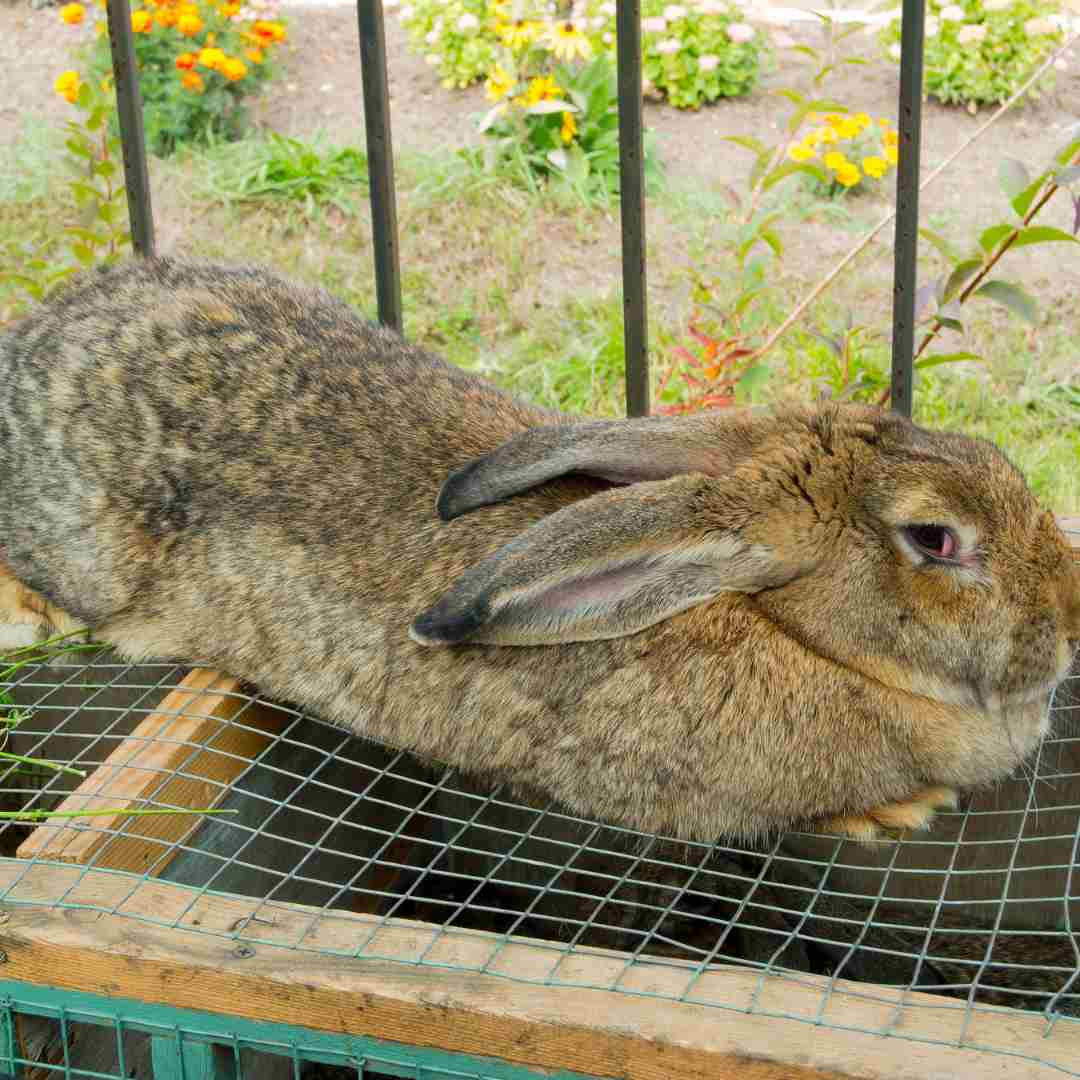Contents Table
Introduction
How to Identify Rabbit Breeds by Size
Guide to Accurate Rabbit Size Estimation
How Nutrition Affects Rabbit Growth
What Size Rabbits Live Longest?
Does Keeping Large Rabbits Always Benefit?
Q&A
Conclusion
Introduction
Rabbits vary in size despite being small. Weight ranges from 1.1 pounds for the Netherland Dwarf to 14 pounds for the Flemish Giant. A rabbit can be 8 to 20 inches long. Rabbits make terrific pets and can learn tricks despite their small size.
How to Identify Rabbit Breeds by Size
Rabbits vary in size, shape, and colour, making breed identification difficult. This page covers rabbit breeds and sizes.
Small Rabbits
Rabbits under four pounds are considered small. At two to three and a half pounds, the Netherland Dwarf is one of the smallest rabbit breeds. Another small breed is the Polish rabbit, weighing 2.5 to 3.5 pounds.
Medium Rabbits
Around four to six pounds is usual for medium rabbits. One of the most popular medium-sized breeds, the Mini Lop weighs 4–5.5 pounds. At four to five and a half pounds, the Holland Lop is another popular medium-sized breed.
Big Rabbits
Rabbits over six pounds are considered large. The Flemish Giant, one of the largest rabbit breeds, weighs 9–11 1/2 pounds. Another huge breed is the Giant Chinchilla, weighing 7–9.5 pounds.
Huge Rabbits
Rabbits over 11 1/2 pounds are considered extra-large. One of the largest rabbit breeds, the Checkered Giant weighs 12–15 and a half pounds. Another extra-large breed is the English Lop, weighing 12–15.5 pounds.
No matter their size, rabbits need a balanced diet, plenty of exercise, and a safe, pleasant home. Rabbits make great pets and bring years of joy to their owners with proper care.
Guide to Accurate Rabbit Size Estimation
Measuring a rabbit's size is difficult, but it's crucial for its health. Tips for effectively measuring rabbit size:
1. Measure rabbit length. Measure the rabbit from snout to tail on a level surface.
2. Measure rabbit height. Measure from the floor to the rabbit's ears while standing it up.
3. Weigh rabbit. Put the rabbit on a home scale or take it to a vet to weigh it.
4. Compare the measurements to rabbit average size. The average rabbit is 8–12 inches long and 2–4 pounds.
Follow these techniques to precisely assess a rabbit's size and keep it healthy and happy.
How Nutrition Affects Rabbit Growth
Small mammals like rabbits are popular pets. Soft fur and playful attitudes define them, but diet affects their size. Understanding how nutrition affects rabbit size is crucial to delivering the best care.
A rabbit should eat hay, fresh veggies, and some pellets. A rabbit's diet should be mostly hay, which provides fibre and aids digestion. Due to their sugar content, fresh veggies should be served sparingly to avoid digestive difficulties. Pellets are high in calories and can cause obesity, so offer them sparingly.
Rabbit size depends on food intake. Overfeeding a rabbit stunts its growth and makes it overweight. However, a rabbit that is underfed will become emaciated and grow slower. To maintain healthy growth, rabbits need the optimum amount of food.
Rabbit growth requires diet and exercise. Exercise keeps rabbits active and builds muscle. Giving rabbits lots of room to run and play will help them grow.
Overall, rabbit growth and development require diet and exercise. By giving rabbits enough food and activity, owners may help them grow. The greatest rabbit care requires understanding how diet affects size.
What Size Rabbits Live Longest?
Many homes keep rabbits, which range in size. Some want bigger rabbits, others smaller ones. Which rabbit size lives longest? Answering this topic requires understanding rabbit size and lifetime.
Overall, larger rabbits live longer. This is because larger rabbits can store more energy and survive longer. Larger rabbits are less likely to be eaten, which can extend their lifespan.
Size is not the only element affecting rabbit lifetime. Nutrition, exercise, and health might also contribute. A healthy rabbit that gets enough exercise and eats well will live longer. Rabbits in clean, safe environments live longer.
In conclusion, larger rabbits live longer, but food, exercise, and health also matter. Therefore, when choosing the longest-lived rabbit size, all of these criteria must be considered.
Does Keeping Large Rabbits Always Benefit?
Keeping huge rabbits as pets can be gratifying, but weigh the pros and cons first. Bigger bunnies are more attractive, but they need more space and resources.
Pros
Large rabbits are calmer and simpler to manage than smaller ones. They are also less inclined to bite or attack, making them ideal for families. Large rabbits are more active and playful than smaller ones, providing hours of fun.
Large rabbits can live up to 10 years longer than smaller breeds. This lets owners appreciate their pet longer.
Cons
The biggest drawback of having huge rabbits is that they need more space and resources. Larger cages and food are costly. Due to their stature, they are more likely to develop obesity and musculoskeletal problems.
Due to their eagerness and tendency to chew furniture, large rabbits are more damaging than smaller ones.
Conclusion
Large rabbits can be lucrative, but you should weigh the pros and cons before getting one. Though more beautiful, they demand more space and resources than lesser varieties. They also cause greater health issues and damage. Lifestyle and resources should determine whether to keep a huge rabbit.
Q&A
1. How big are rabbits?
Domestic rabbits average 8–12 inches long and 2–4 pounds, depending on breed.
Conclusion
From the Netherland Dwarf to the Flemish Giant, rabbits vary in size. Rabbit size varies with breed, age, and gender. Adult rabbits weigh 2–4.5 kg and reach 50 cm. Rabbit size depends on breed and individual traits.